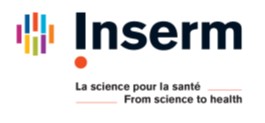Guidelines for the assessment and management of residual sleepiness in obstructive apnea-hypopnea syndrome. Endorsed by the French Sleep Research and Medicine Society (SFRMS) and the French Speaking Society of Respiratory Diseases (SPLF)
Résumé
Excessive daytime sleepiness (EDS) is frequent among patients with obstructive sleep apnea hypopnea syndrome (OSAHS) and can persist despite the optimal correction of respiratory events (apnea, hypopnea and respiratory efforts), using continuous positive airway pressure (CPAP) or mandibular advancement device. Symptoms like apathy and fatigue may be mistaken for EDS. In addition, EDS has multi-factorial origin, which makes its evaluation complex. The marketing authorization [Autorisation de Mise sur le Marché (AMM)] for two wake-promoting agents (solriamfetol and pitolisant) raises several practical issues for clinicians. This consensus paper presents recommendations of good clinical practice to identify and evaluate EDS in this context, and to manage and follow-up the patients. It was conducted under the mandate of the French Societies for sleep medicine and for pneumology [Société Française de Recherche et de Médecine du Sommeil (SFRMS) and Société de Pneumologie de Langue Française (SPLF)]. A management algorithm is suggested, as well as a list of conditions during which the patient should be referred to a sleep center or a sleep specialist. The benefit/risk balance of a wake-promoting drug in residual EDS in OSAHS patients must be regularly reevaluated, especially in elderly patients with increased cardiovascular and psychiatric disorders risks. This consensus is based on the scientific knowledge at the time of the publication and may be revised according to their evolution.
Domaines
Médecine humaine et pathologie| Origine | Fichiers produits par l'(les) auteur(s) |
|---|

